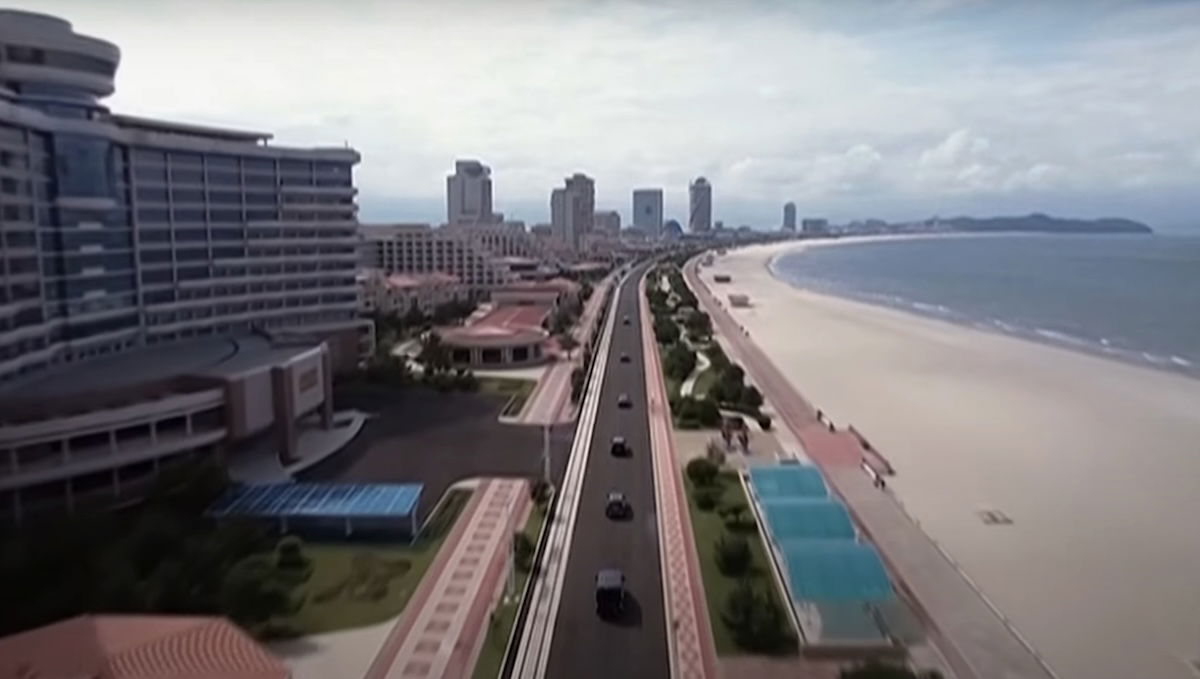In a bold move to revitalize its tourism sector, North Korea has announced the official opening of its long-anticipated Wonsan-Kalma seaside resort town on July 1, 2025. Covering 605 acres along a picturesque 3.5-mile beach, this development boasts extensive leisure facilities, including thousands of hotel rooms.
Located approximately 100 miles from Pyongyang, Wonsan-Kalma is accessible via a two-hour drive. Additionally, it features a dual-use airport with a runway exceeding 10,000 feet. Although this airport has largely remained unused for commercial flights—previously serving as a missile testing site—its presence is noteworthy for the resort’s potential.
The project has a tumultuous history, with initial construction commencing in 2018 and a planned opening in 2019 that was ultimately missed. Abandoned for a time due to the pandemic, work resumed in 2023 with Kim Jong Un personally overseeing the revitalization efforts. After six years of delays, the resort is now ready to welcome its first visitors, with a reported capacity of 20,000.
During the grand opening, which took place just days prior to the official launch, Kim emphasized the importance of high-quality service standards and the development of additional attractions, such as amusement parks and shopping malls, aiming for a “world-class” experience.
Hailing from Wonsan, where many elite North Koreans own private villas, Kim’s ambition to promote the town is aimed at gaining broader appeal. However, a pressing question lingers: who will actually vacation in this isolated country?
Historically, North Korea has permitted very limited tourism, requiring visitors to be part of guided tours to ensure they only see government-approved sights. Although international tourism halted during the pandemic, there has been a cautious re-emergence, primarily attracting visitors from neighboring countries like Russia and China. The borders briefly reopened to Western tourists in February 2025 but quickly closed again shortly thereafter.
The resort’s opening seems primarily tailored for the North Korean elite, who may already own properties in the area. For now, it will initially cater only to domestic tourists.
In terms of targeting international visitors, Kim envisions appealing to tourists from “friendly” nations, beginning with those from Russia and China, who were granted a sneak preview of the resort last year. However, questions remain about whether foreign tourists will be under constant supervision or able to explore freely within the resort’s confines.
This initiative marks a notable pivot in North Korea’s tourism strategy, traditionally focused on meticulously organized excursions rather than leisure travel. With a mixed track record on ambitious projects, past endeavors like the incomplete Ryugyong Hotel raise skepticism about Wonsan-Kalma’s long-term viability.
Despite its history of abandoned ventures, the Wonsan-Kalma project appears set to open its doors, although its sustainability remains uncertain. The world will watch closely to see if it can transform into a viable destination for relaxation rather than simple curiosity. The forthcoming years will likely reveal whether this resort can successfully attract visitors and remain operational amid North Korea’s unique tourism landscape.

